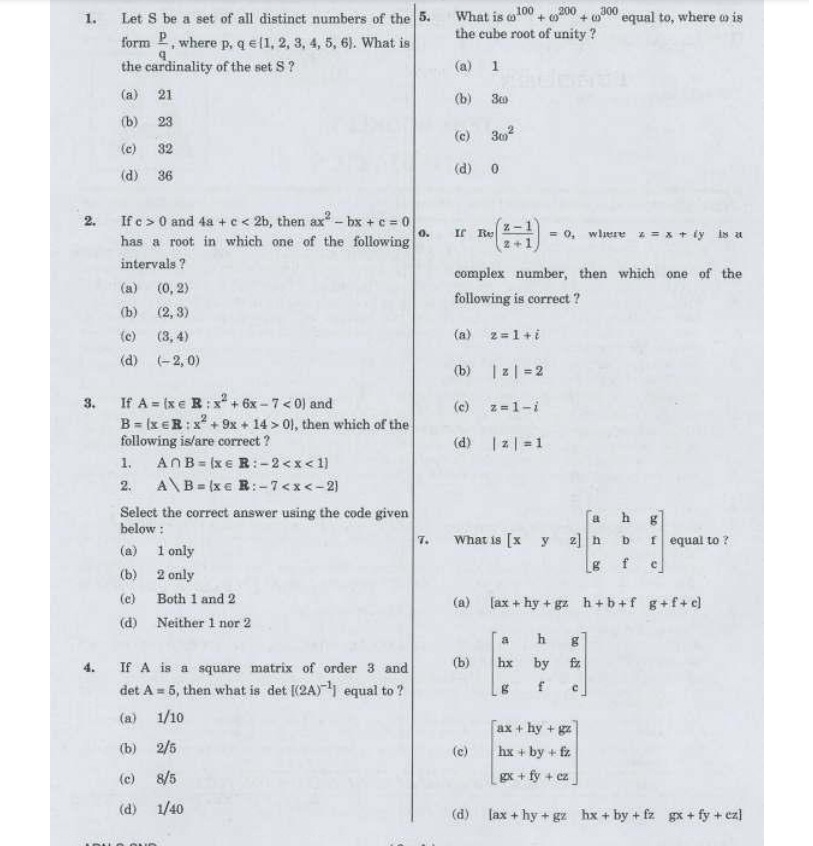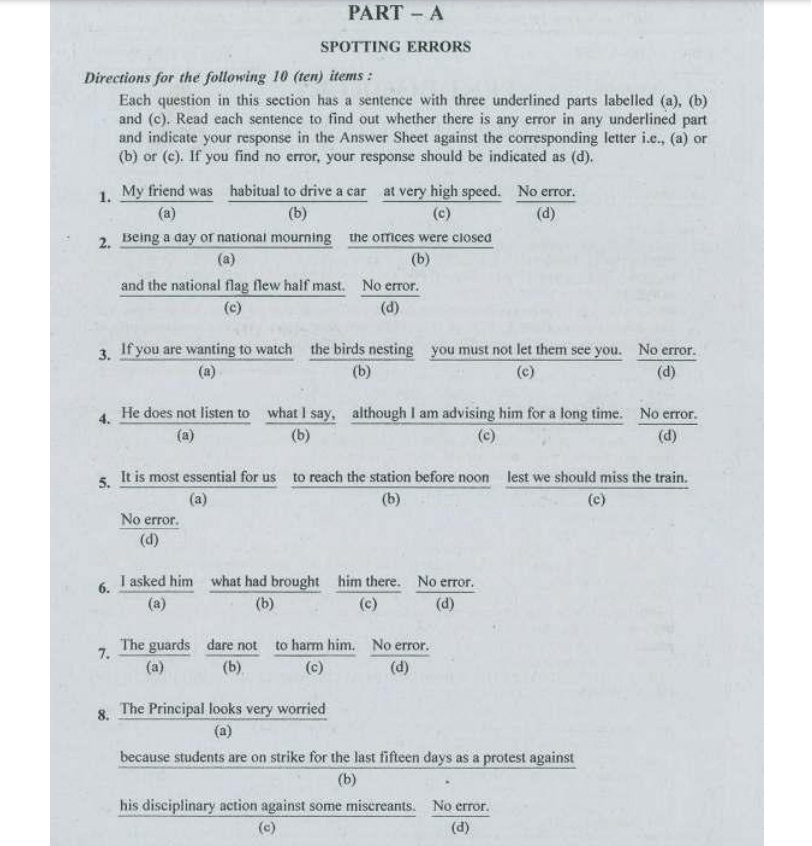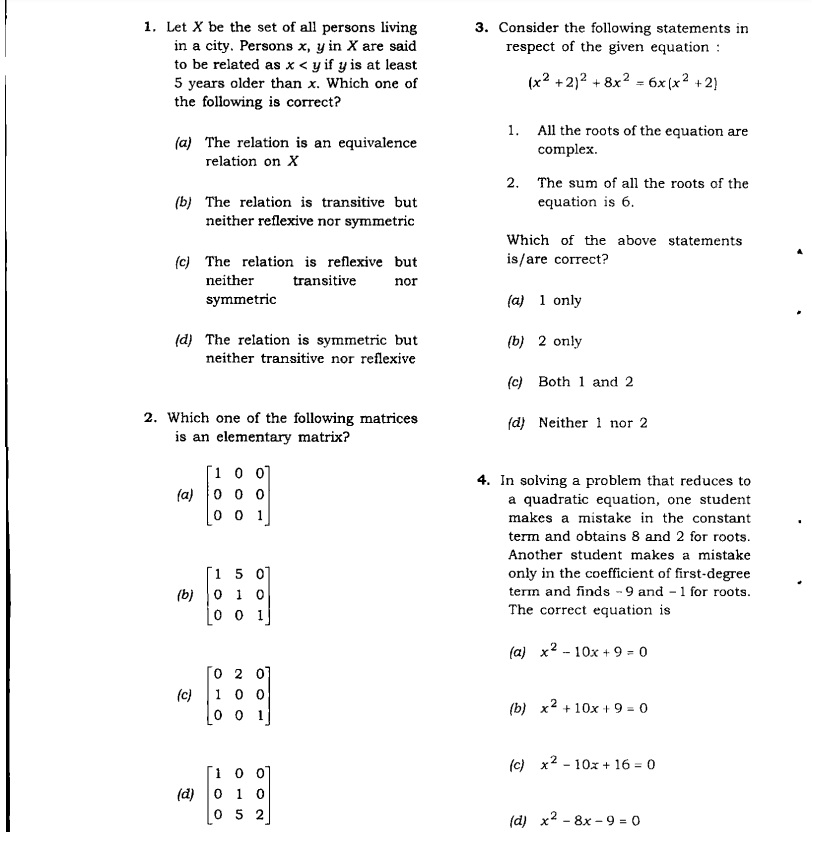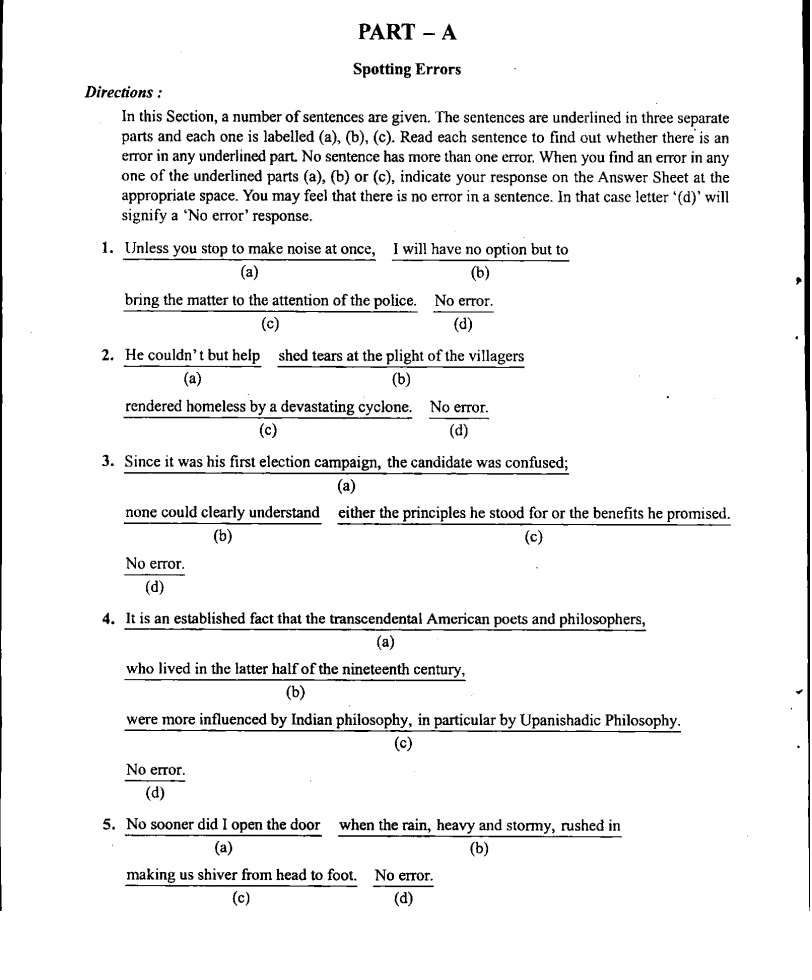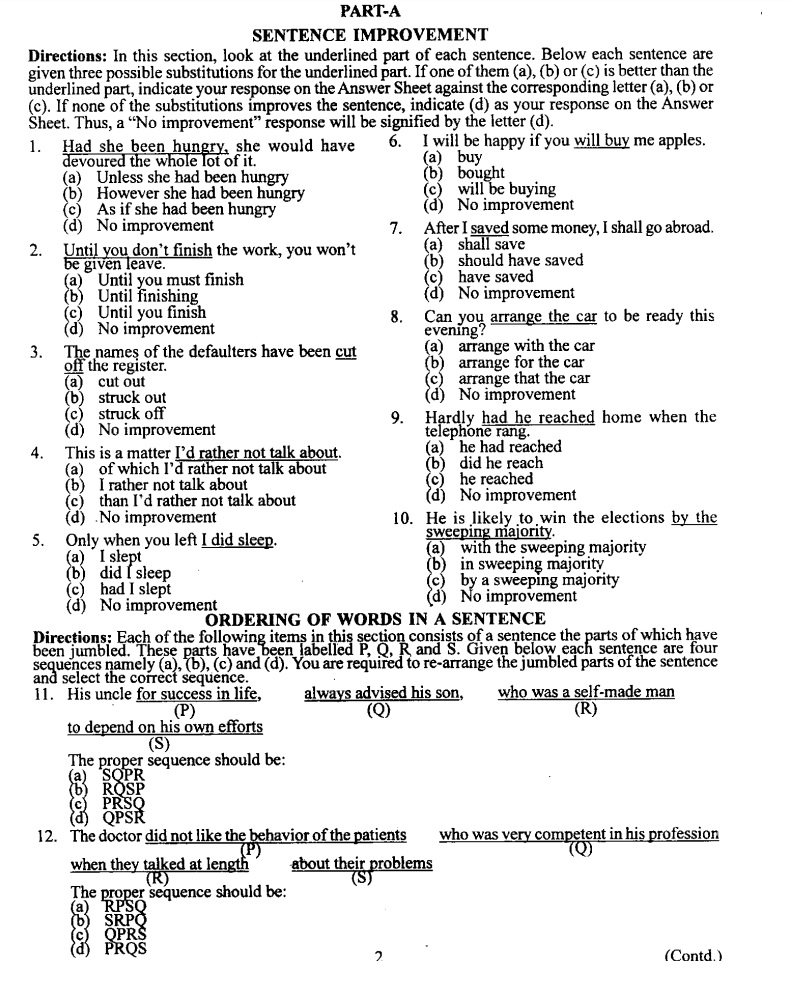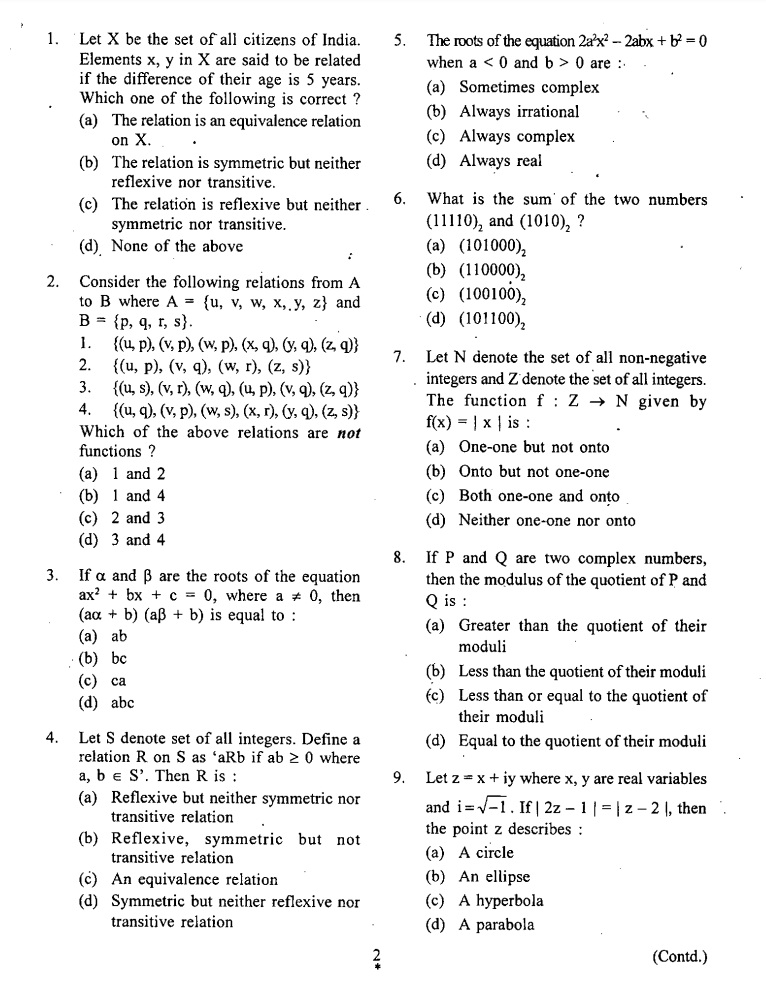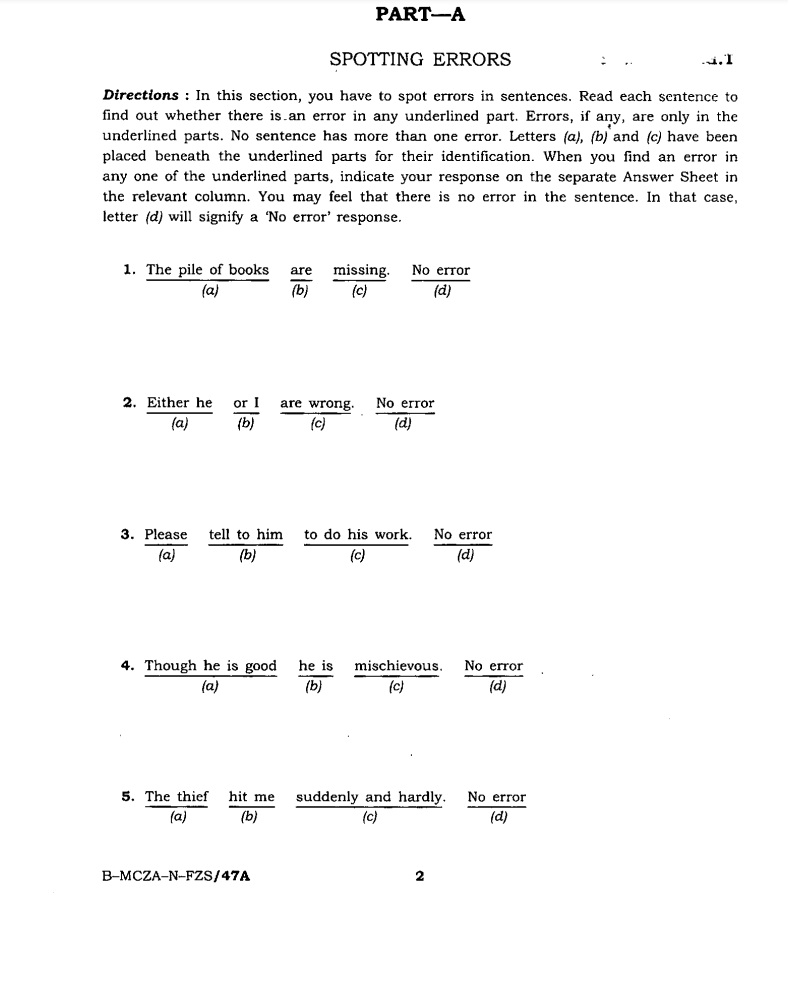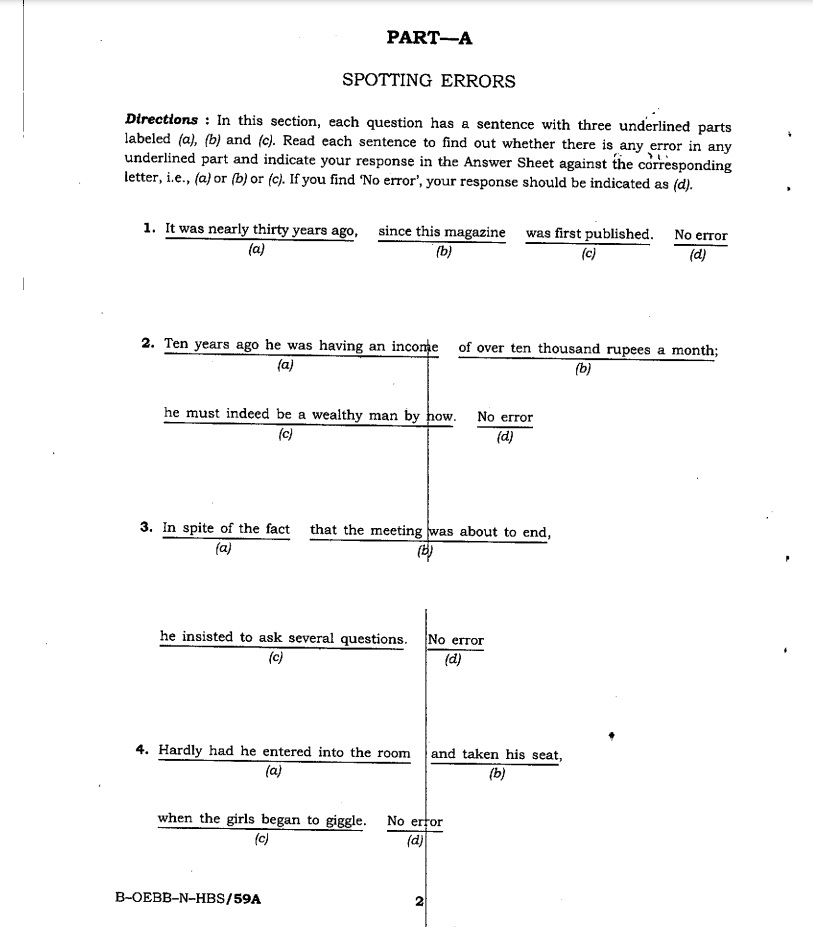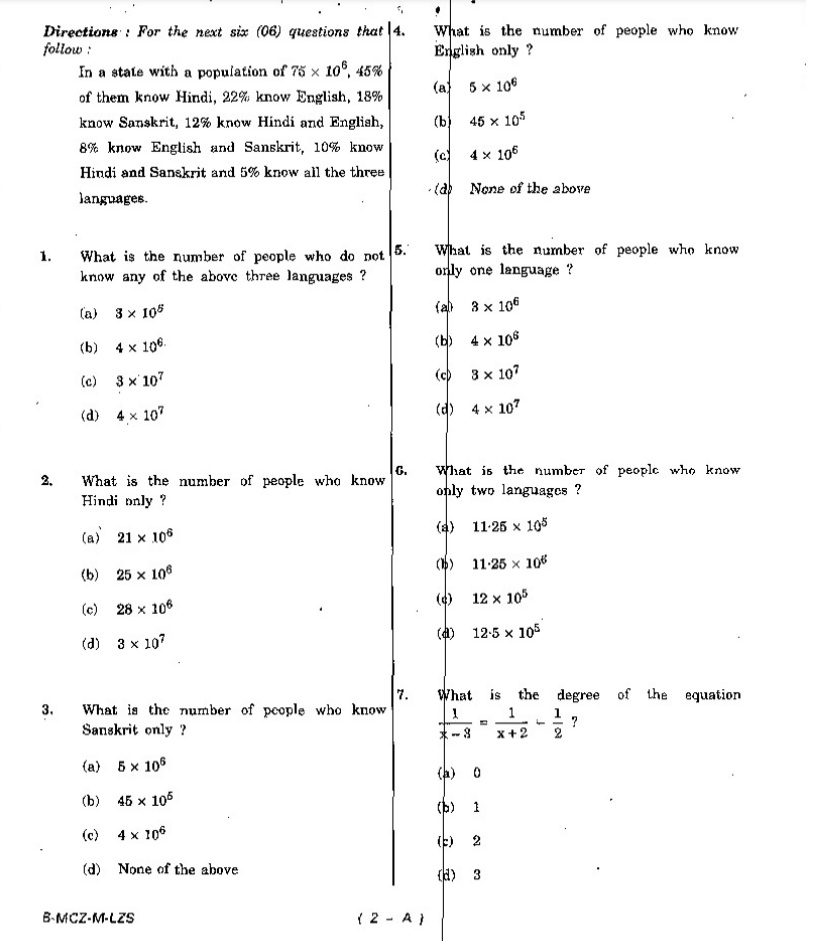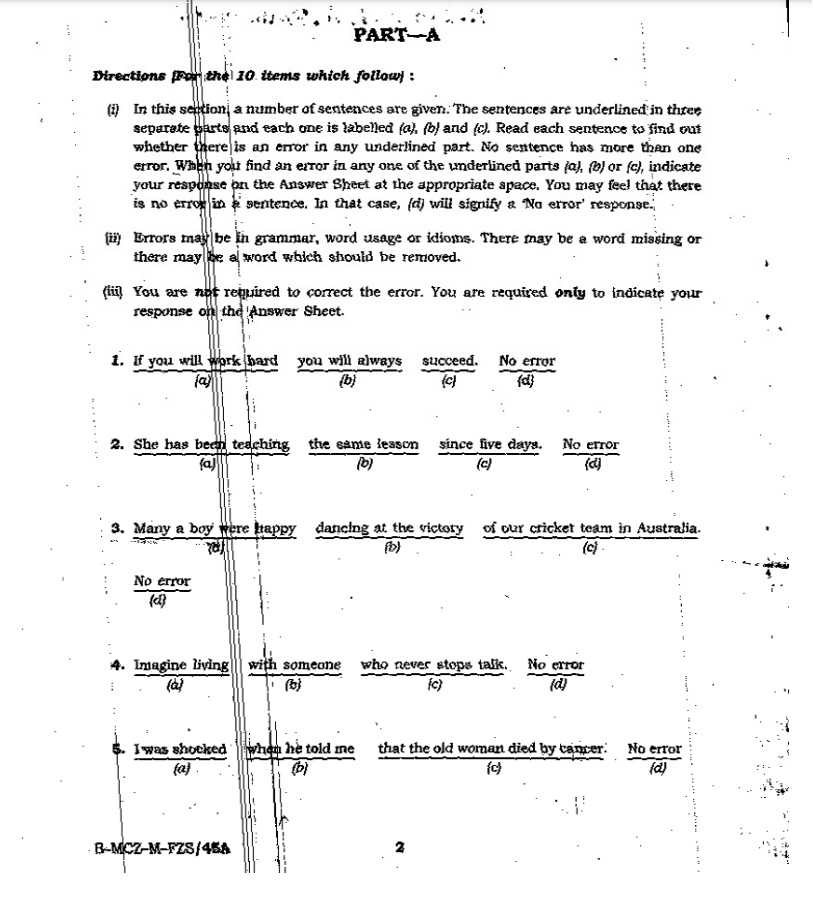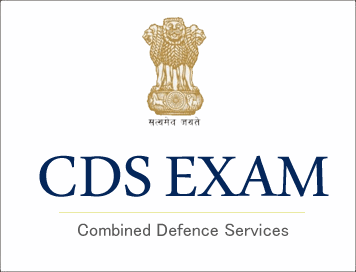
CDS Exam Solved Papers - 2013- I Paper I: General Knowledge
1. Which one among the following countries intiated the process of Fourth Wave of Democratic Transition ?
A. Libya
B. Afganistan
C. Tunisia
D. Marocco
2. Which one among the following regarding G-20 is not correct ?
A. A group of developed countries
B. An integral part of the United Nations
C. Outside the World Bank and IMF
D. An offshoot of G-7
3. ONGC Videsh (the State-owned oil and gas company of India) recently (September 2012) signed a definitive agreement with
A. Russia
B. Azerbaijan
C. Iran
D. South Sudan
4. Forth BRICS Summit, held in New Delhi in March 2012, deliberated on the challenges faced by India for sustainable growth. Which one among the following is not a part of the formulated challenges ?
A. Improvements required in public sector management
B. Inclusive growth
C. Improvements required in physical infrastructure
D. Development in the agricultural sector
5. Which among the following has been included as a parameter for the first time under the National Ambient Air Quality Standards (NAAQS) based on Central Pollution Control Board and IIT, Kanpur research, WHO guidelines and European Union limits and Practices ?
A. Sulphur dioxide
B. Oxides of nitrogen
C. Ozone
D. Carbon monoxide
6. The fortification of Calcutta by the British in 1756 was regarded by the Nawab of Bengal, Siraj-ud-daulah, as
A. growth of large-scale British trade
B. an attack upon his sovereigntly
C. insecurity of the British in India
D. British control over Bengal
7. Which one among the following statements with regard to the National Security Council (NSC) of India is not correct ?
A. It is a three- tiered organization
B. The Deputy Chairman of the Planning Commission is its member
C. It is the apex body looking exclusively the security concerns of the country
D. RAW and Intelligence Bureau (Indian) report to NSC
8. The highly polished monolithic Ashokan pillars were carved out of single pieces of a buff-coloured sandstone, usually mined from the quarries of
A. Chunar near Mirzapur
B. Lauriya in Nandangarh
C. Sarnath near Varanasi
D. Udayagiri near Bhubaneshwar
9. In the Gupta age, Varahamihira wrote the famous book, Brihat Samhita. It was a treatise on
A. Astronomy
B. Statecraft
C. Ayurvedic system of medicine
D. Economics
10. Human Poverty Index (HPI) developed by UNDP is based on which of the following deprivations ?
1. Income deprivation
2. Literacy deprivation
3. Social services deprivation
4. Employment deprivation
Select the correct answer using the code given below.
A. 1, 2, 3, and 4
B. 1, 2 and 3 only
C. 1, 3 and 4 only
D. 2 and 4 only
11. The lower growth coal production in India during 2011-2012 was primarily due to
1. environmental restrictions
2. non- availability of forestry clearance
3. poor law and order situation in coal producing states
4. excessive rainfull in coal mining areas.
Select the correct answer using the code given below.
A. 1, 2, 3 and 4
B. 1, 2 and 3 only
C. 2, 3 and 4 only
D. 1 and 4 only
12. The sharp depreciation of rupee in the Forex market in the year 2011 was due to
1. flight to safely by foreign investors
2. meltdown in European markets
3. inflation in emerging market economics
4. lag effect of monetary policy tightening
Select the correct answer using the code given below.
A. 1, 2, 3 and 4
B. 1, 2 and 4 only
C. 3 and 4 only
D. 1, 2, 3 and 4
13. Which of the following occupations are included under secondary sector as per the national income accounts ?
1. Manufacturing
2. Construction
3. Gas and water supply
4. Mining and quarrying
Select the correct answer using the code given below.
A. 1, 2, 3 and 4
B. 1, 2 and 4 only
C. 1, 2 and 3 only
D. 3 and 4 only
14. The government can influence private sector expenditure by
1. taxation
2. subsidies
3. macroeconomic policies
4. grants
Select the correct answer using the code given below.
A. 1, 2, 3 and 4
B. 1, 2 and 4 only
C. 1, 2 and 3 only
D. 3 and 4 only
15. Which one among the following is a fixed cost to a manufacturing firm in the short run ?
A. Insurance on buildings
B. Overtime payment to workers
C. Cost of energy
D. Cost of raw materials
16. Which of the following are included in the category of direct tax in India ?
1. Corporation Tax
2. Tax on Income
3. Wealth Tax 4. Customs Duty
5. Excise Duty
Select the correct answer using the code given below.
A. 1, 2 and 3
B. 1, 2, 4 and 5
C. 2 and 3 only
D. 1, 3, 4 and 5
17. Which one among the following programmes has now been restructured as the National Rural Livelihood Mission ?
A. Swarna Jayanti Shahri Rozgar Yojana
B. Swarna Jayanti Gram Swarozgar Yojana
C. Janshree Bima Yojana
D. Rashtriya Swasthaya Bima Yojana
18. The concept which tries to ascertain the actual deficit in the revenue account after adjusting for expenditure of capital nature is termed as
A. revenue deficit
B. effective revenue deficit
C. fiscal deficit
D. primary deficit
19. Which of the following institutions was/ were asked by the Government of India to provide official estimates of black (unaccounted) money held by Indians, both in India and abroad ?
1. National Institute of Public Finance and Policy
2. National Council of Applied Economics Research
3. National Institute of Financial Management
Select the correct answer using the code given below.
A. 1 only
B. 1 and 2 only
C. 2 and 3 only
D. 1, 2 and 3
20. Outstanding historian Eric Hobsbawn who expired on 1st October, 2012, haS authored a large number of books. The title of his famous autobiography is
A. Bandits
B. Uncommon People : Resistance, Rebellion and Jazz
C. The New Century : In Conversation with Antonic Polito
D. Interesting Times : A Twentieth – Century Life
21. Some atheists, skeptics and no-believers called to celebrate ‘December 25’ as Newtonmas day instead observing Christmas Day. He reason they propose that
A. both Isaac Newton and Jesus Christ were great
B. Isaac Newton was born on 25th December
C. ‘Skeptic Society’ was founded on 25th December
D. Isaac Newton was a deep believer of Christianity
22. European Union’s Annual Sakharov Prize for Freedom of Thought for 2012 has been won by
A. Guillermo Farinas from Cuba
B. Nasrin Sotoudeh and JafarPanahi from Iran
C. Ali Farzat from Syria and Mohamed Bouazizi from Tunisia
D. Asmaa Mahfouz and Ahmed al-Senussi from Egypt and Libya respectively
23. The Rohingya are the minorities of
A. South Africa
B. Canada
C. Myanmar
D. Bhutan
24. Consider the following statements :
During the last week of November 2012, Palestinian engineers dug up the tomb of Yasser Arafat. This was done primarily to
1. place the remains of Yasser Arafat in a mosque compound
2. confirm the prevaling suspicion that Israel had poisoned him
Which of the statements given above is/are correct ?
A. 1 only
B. 2 only
C. Both 1 and 2
D. Neither 1 nor 2
25. Rafael Nadal won the French Open Tennis Title, 2012. He defeated
A. Andy Murray
B. Roger Federer
C. Novak Djokovic
D. David Ferrer
26. Which one among the following was added in the year 2012 in the list of World Heritage Sites of the UNESCO ?
A. Western Ghats
B. Agra Fort
C. Ajanta Caves
D. Meenakshi Temple
27. Which one among the following is not a salient feature of the Companies Bill as amended in the year 2012 ?
A. For spending the amount earmarked for corporat e social responsibility, the company shall give preferences to local areas where it operates
B. Punishment for falsely inducing a person to enter into an agreement with bank or financial institution with a view to obtaining credit facilities
C. There is no limit in respect of companies in which a person may be appointed as auditor
D. ‘Independent directors’ shall be excluded for the purpose of computing ‘one-third of retiring directors’
28. FDI in Multi-Brand Retail Trade (MBRT) in all product is now permitted in India subject to
1. a ceiling of 51%
2. minimum amount to be brought in as FDI by the foreign investor is US$ 100 million
3. at least 50 % of the procurement of manufactured/processed products should be sourced from ‘small industries’
4. retail sales locations set up only in cities with a population of more than 10 lacs
Select the correct condition/conditions using the code given below.
A. 1, 2, 3 and 4
B. 1 and 4 only
C. 2 only
D. 1, 2 and 4 only
29. Why was Kaushik Basu, the ex-economic advisor to the Prime Minister of India, in news recently ?
He was appointed as
A. the President of the IMF
B. the President of the World Bank
C. the Economic Advisor of the United Nations
D. the Chief Economist of the World Bank
30. Who among the following was selected for the prestigious Indira Gandhi Prize for Peace, Disarmament and Development, 2012 ?
A. Ellen Johnson Sirleaf
B. Ela Bhatt
C. Luiz Inacio Lula da Silva
D. Sheikh Hasina
31. Between 1309 and 1311, Malik Kafur led two campaigns in South India. The significance of the expeditions lies in it that
1. they reflected a high degree of boldness and spirit of adventure on the part of Delhi rules
2. the invaders returned to Delhi with untold wealth
3. they provided fresh geographical knowledge
4. Ala-ud-din promoted Malik Kafur to the rank of Malik-naib orVice-Regent of the Empire
Select the correct answer using the code given below.
A. 1 and 3 only
B. 1, 2 and 4 only
C. 2 and 4 only
D. 1, 2, 3 and 4






